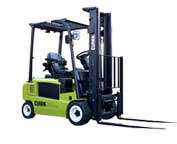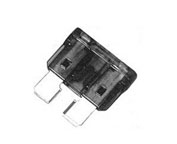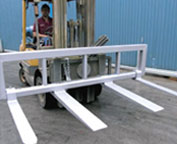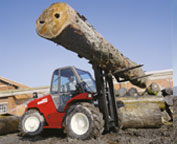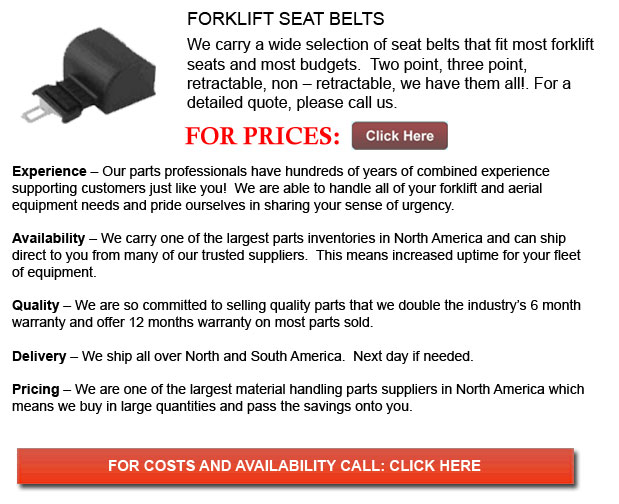
Forklift Seat Belts - This guideline reason is to be able to explain the Regulation requirements for the application of driver seatbelts or restraints on lift trucks. It is the employers' responsibility to ensure that each machinery, piece of equipment and tool in the workplace is chosen and used rightly and operated in accordance with the manufacturer's directions.
In regards to their design, maintenance, inspection, fabrication and use Rough Terrain lift trucks should satisfy the guidelines of ANSI Standard ASME B56.6-1992.
Mobile equipment like side boom tractors with a Rollover Protective Structure (ROPS), ought to have seat belts which meet the Society of Automotive Engineers safety requirements; Society of Automotive Engineers Standard J386 JUN93, Operator Restraint System for Off-Road Work Machines. If whichever mobile equipment has seat belts required by law, the driver and subsequent passengers must make sure they use the belts every time the motor vehicle is in motion or engaged in operation in view of the fact that this could cause the equipment to become unstable and hence, unsafe.
When a seat belt or different driver restraint is needed on a lift truck.
The seat belt requirements while working a forklift depend on various factors. Whether the lift truck is equipped along with a Rollover Protective Structure, the kind of lift truck itself and the year the forklift was actually manufactured all add to this determination. The manufacturer's directions and the requirements of the applicable standard are referenced in the Regulation.
In the case of powered industrial trucks, ANSI Standard ASME B56.1-1993 refers to an operator restraint device, system, or enclosure. A driver restraint device, system, or enclosure is designed to assist the driver in lowering the danger of entrapment of the torso and/or head between the truck and the ground in the event of a tip over. The restraint device or system can include a seat belt, even though a seat belt is not necessarily a part of such machine or system.
 Click to Download the pdf
Click to Download the pdf
Forklift Parts
Clark Forklift Attachments
Clark Forklift Attachments - Performing globally, there are now 350,000 Clark forklifts and lift vehicles in operation, with upwards of 250,000 of those operating in North America. Clark has five main lines of lift trucks across the globe, making it one of the most expansive corporations in the industry. Heavy duty vehicles ranging from 1,500lb to 18,000lb capacities, duel fuel,...
More
Forklift Fuses
Forklift Fuse - A fuse consists of a metal strip or a wire fuse element of small cross-section in comparison to the circuit conductors, and is usually mounted between two electrical terminals. Generally, the fuse is enclosed by a non-combustible and non-conducting housing. The fuse is arranged in series which can carry all the current passing through the protected circuit....
More
Fork Mounted Spreader Bar
Fork Mounted Spreader Bar - Commonly Utilized Forklift Attachments
Safety cages are an important forklift accessory safety feature. Forklifts normally need to lift employees to a specific height in order for them to complete maintenance. The safety cage provides access to things stored at a height. Other items for example, are required to be moved in bags. Bag lifters are...
More
Concrete Hopper
Concrete Hopper - The self-dumping hopper accessory could automatically start to both dump and release whenever the bumper release touches the side of a dumpster. When dumping is finished, the hopper can go back to original locked and upright position. This piece of machinery is even obtainable together with a cable which enables operation from the seat of the lift...
More
Clamp Forklift Attachment
Clamp Forklift Attachments - Using lift trucks on the jobsite could guarantee the safety of workers by greatly lessening their physical workload. In whichever industry or factory, worker safety is important. Materials should be transported, stored and lifted within the premises without causing any harm to all the workers. Forklifts are often utilized in distribution centers and warehouses. They have...
More
Independent Fork Positioners
Independent Fork Positioners - A fork positioner is a tool made out of high quality materials intended to endure the most demanding procedures and work environments. This particular piece of equipment could enable the one driving to be able to maneuver the blades hydraulically without leaving the seat. Side shifting units have the added ability to laterally position the arms...
More
Attachment for Rough Terrain Forklift
Rough Terrain Forklift Attachments - There are in fact two categories of lift trucks within the production industry, the rough terrain model and the industrial model. Rough terrain lift trucks appeared in the 1940's built primarily for use on rough surfaces, perfect for lumberyards and construction sites, offering hauling muscle when there was no paved surface existing.
Typically, the majority...
More
Attachment for Hyster Forklifts
Hyster Attachments - Hyster is an industry leader in the materials handling industry that has been in business for more than eighty years. However, it began as a producer of lifting machines as well as winches. Most of its production was focused in the northwest United States and dealt mostly with the lumber and logging industry. A couple years after...
More


![]() Click to Download the pdf
Click to Download the pdf
